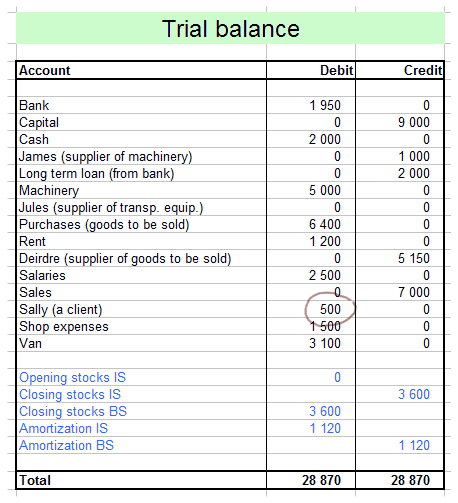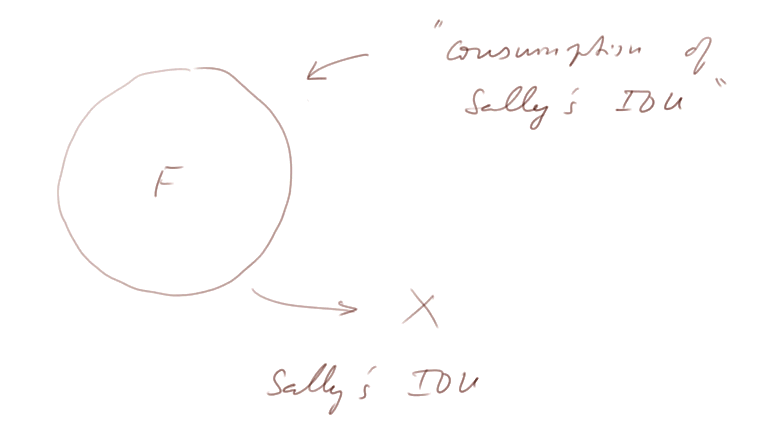General accounting
V. 22. Provisions for bad or doubtful clients
Video
After adjustments for stocks and for amortization, we reached the following Trial balance

As we can see, a client, Sally, owes us 500€.

What should we do if we think there is a likelihood that Sally will not pay us?
If it is sure that Sally will not pay (say, because she went into bankruptcy, and we believe that in the liquidation procedures of her firm there will be no money left for us), then we must make a "write-off" of this IOU.
The corresponding transaction is as follows:

The value of Sally's IOU vanishes (bottom arrow leaving the firm), and somehow it is a consumption (or at least a charge) of the firm for the accounting period (top arrow coming into the firm).
In this case, the technical double-entry recording goes like this:
we credit the debtor's account (called here Sally account)

and we debit a new adjustment account (recording a charge, therefore with the suffix IS)

The new TB would become this

Instead of crediting directly the debtor's account, we could also credit a new account called "Provisions for bad or doubtful clients BS".
In fact it would be more standard, since, as you recall, accounting is a process of recording useful information, not of deleting it. And the "write-off" of Sally's IOU is an incident which we want to keep a trace of.
In any case, the Income Statement would become this

If we think there is still a probability that Sally pay, we may pass only a provision for 50% of her IOU.
In this case, the double-entry is shown below


If and when she actually pays we shall make some other entries called "a reversal of provision".



